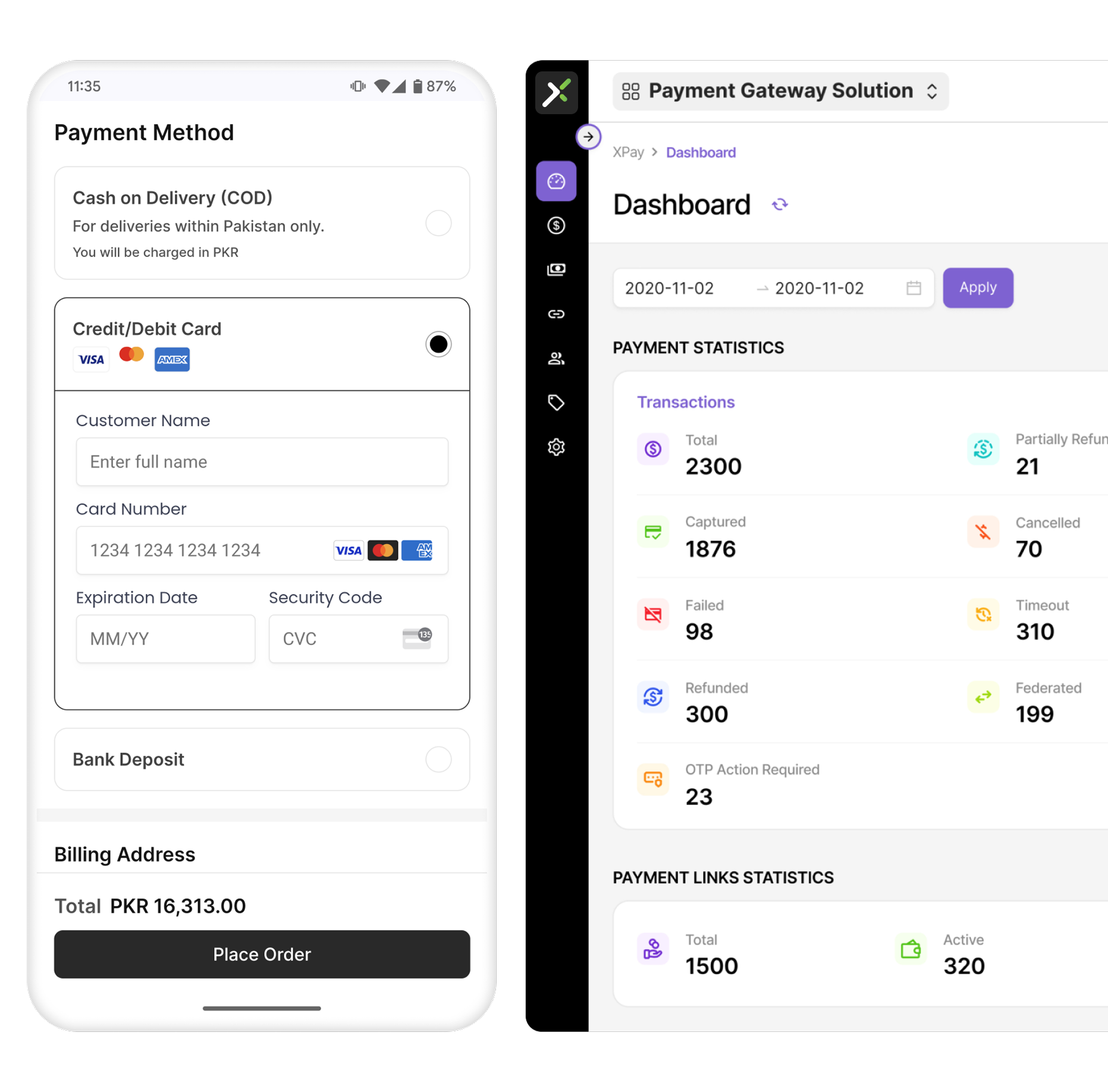BLOG
How eCommerce Brands Are Fighting Back Against Chargeback Fraud
Fighting chargebacks? See how XPay helps eCommerce brands reduce fraud, save costs, and protect payment operations.

Author
XPay
July 15, 2025
BLOG
Fighting chargebacks? See how XPay helps eCommerce brands reduce fraud, save costs, and protect payment operations.

July 15, 2025

Chargeback fraud has become a growing concern for eCommerce brands worldwide, costing merchants billions annually. Often referred to as "friendly fraud," this deceptive practice occurs when customers dispute legitimate transactions with their banks, claiming issues like unauthorized use, non-delivery, or dissatisfaction, despite receiving the goods or services. For eCommerce businesses, chargebacks result in lost revenue, additional fees, damaged processor relationships, and operational inefficiencies.
In this blog post, we’ll explore the rise of chargeback fraud, its impact on eCommerce brands, and how innovative solutions like XPay’s Fraud Engine are empowering merchants to fight back effectively.
Chargeback fraud typically manifests in three primary forms:
The impact of chargeback fraud is significant. Merchants face:
As eCommerce continues to grow, so does the sophistication of fraudsters, making it critical for brands to adopt robust fraud prevention strategies.
The rise of online shopping, accelerated by global events like the COVID-19 pandemic, has created fertile ground for chargeback fraud. According to industry reports, chargeback rates have increased by 20–30% in recent years, with friendly fraud accounting for up to 70% of all chargebacks in some sectors.
For eCommerce brands, particularly in high-risk industries like fashion, electronics, and luxury goods, this trend poses a significant challenge.
Fraudsters exploit the chargeback process because banks often side with consumers to maintain customer satisfaction. This leaves merchants vulnerable, as they must provide extensive documentation to prove the legitimacy of a transaction—a process that is both time-consuming and costly.
Additionally, the rise of digital wallets and one-click payment systems has made it easier for fraudsters to execute scams quickly and anonymously.
To protect their businesses, eCommerce brands are adopting a multi-layered approach to fraud prevention. Here are some of the most effective strategies:
Merchants are implementing stricter verification processes, such as requiring CVV codes, 3D Secure authentication, and address verification systems (AVS). These measures help confirm the identity of the cardholder before a transaction is processed.
Clear communication with customers about order status, shipping updates, and return policies can reduce misunderstandings that lead to chargebacks. Providing detailed tracking information and proof of delivery strengthens a merchant’s case in disputes.
Machine learning and AI-powered fraud detection systems analyze transaction data in real time to identify suspicious patterns. These tools use parameters like IP addresses, device fingerprints, and purchase behavior to flag high-risk transactions before they are completed.
Specialized platforms help merchants streamline the dispute process by automating evidence collection and submission. These tools also provide analytics to identify trends and prevent future chargebacks.
Some payment providers offer cross-merchant fraud data sharing, allowing businesses to block known fraudsters based on anonymized data from other merchants. This collaborative approach significantly enhances fraud detection capabilities.
Maria B, one of Pakistan’s leading fashion retailers, faced a surge in chargeback fraud, particularly during peak sales periods. Customers would place orders, receive their products, and then file disputes with their banks, claiming unauthorized card use, non-delivery, or dissatisfaction.
These "friendly fraud" cases led to significant revenue losses, increased operational costs, and strained relationships with payment processors.
To address this challenge, Maria B partnered with XPay, Pakistan’s first fraud detection engine designed specifically for local merchants. XPay’s XShield, with its innovative Block List feature, empowered Maria B to proactively identify and block fraudulent users. By leveraging real-time tracking and multi-parameter fraud filtering, Maria B achieved remarkable results:
40% Reduction in Chargebacks: Within the first quarter of using XPay, Maria B saw a significant drop in chargeback incidents.
Cost Savings: By avoiding chargeback fees and manual dispute handling, Maria B saved substantial operational costs.
Cross-Merchant Protection: 30% of blocked attempts were linked to fraud indicators shared by other merchants in XPay’s network, demonstrating the power of collaborative fraud prevention.
Improved Processor Trust: Lower dispute ratios strengthened Maria B’s relationships with payment processors, reducing the risk of account penalties.
XPay’s ability to block high-risk users based on identifiers like email addresses, IP addresses, card fingerprints, and phone numbers gave Maria B a robust defense against fraudsters, protecting both revenue and brand reputation.
Among the various tools available, XPay stands out as a leading solution for eCommerce brands, particularly in markets like Pakistan where localized fraud prevention is critical. Here’s why XPay’s Fraud Engine is the best choice for combating chargeback fraud:
Unlike global fraud prevention tools that may overlook regional nuances, XPay is designed specifically for Pakistani merchants. It understands local payment behaviors, fraud patterns, and market dynamics, ensuring more accurate detection and prevention.
XPay’s Block List feature allows merchants to instantly block high-risk users based on multiple identifiers, including:
This multi-parameter approach ensures that fraudsters cannot bypass detection by changing a single identifier.
XPay’s XAP and XStak Admin Panel provide real-time insights into suspicious activities. Merchants can monitor transactions, detect anomalies, and add fraudulent users to the Block List immediately, preventing chargebacks before they occur.
XPay’s network enables merchants to share anonymized fraud data, creating a collaborative ecosystem that strengthens fraud prevention. For example, if a fraudster targets one merchant, other businesses in the network can block them proactively, reducing risk across the board.
XPay integrates effortlessly with existing payment systems, making it easy for merchants to adopt without overhauling their operations. The user-friendly interface and automated processes minimize the learning curve and operational overhead.
By reducing chargebacks, avoiding fees, and streamlining dispute management, XPay delivers significant cost savings. For merchants like Maria B, this translates to higher profitability and operational efficiency.
In addition to using tools like XPay, eCommerce brands can adopt the following best practices to minimize chargeback fraud:
Clear Return and Refund Policies: Transparent policies reduce customer confusion and discourage fraudulent disputes.
Proactive Customer Support: Promptly addressing customer inquiries and complaints can prevent disputes from escalating to chargebacks.
Detailed Order Documentation: Maintain thorough records of transactions, shipping details, and customer communications to strengthen dispute cases.
Educate Customers: Inform customers about the chargeback process and its consequences to deter friendly fraud.
Monitor Fraud Trends: Regularly analyze transaction data to identify emerging fraud patterns and adjust prevention strategies accordingly.
Chargeback fraud is a persistent threat to eCommerce brands, but with the right tools and strategies, merchants can protect their revenue and reputation. XPay’s Fraud Engine, with its XShield Block List and cross-merchant data sharing, offers a powerful, localized solution for combating fraud in Pakistan’s growing eCommerce market. As demonstrated by Maria B’s success, XPay empowers merchants to proactively detect and block fraudsters, reduce chargebacks, and optimize payment operations.
As eCommerce continues to evolve, staying ahead of fraudsters requires innovative solutions and a collaborative approach. By leveraging XPay and adopting best practices, eCommerce brands can fight back against chargeback fraud and build a more secure, profitable future.
Offer customers a faster, secure checkout experience without redirects. From cards and wallets to payment links. XPay helps you reduce drop-offs and get paid reliably.
Get Free Demo
